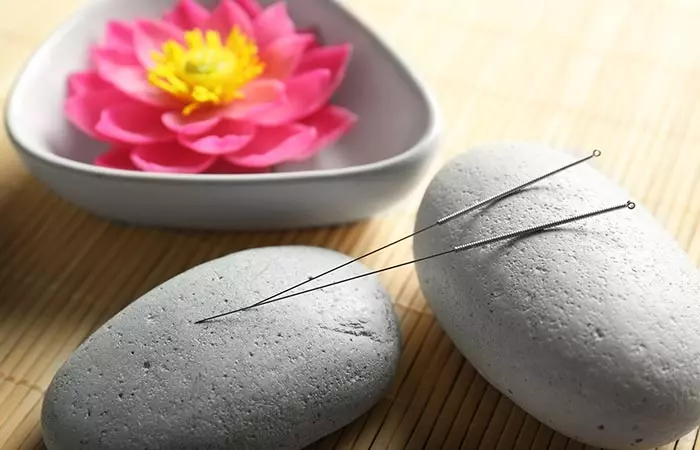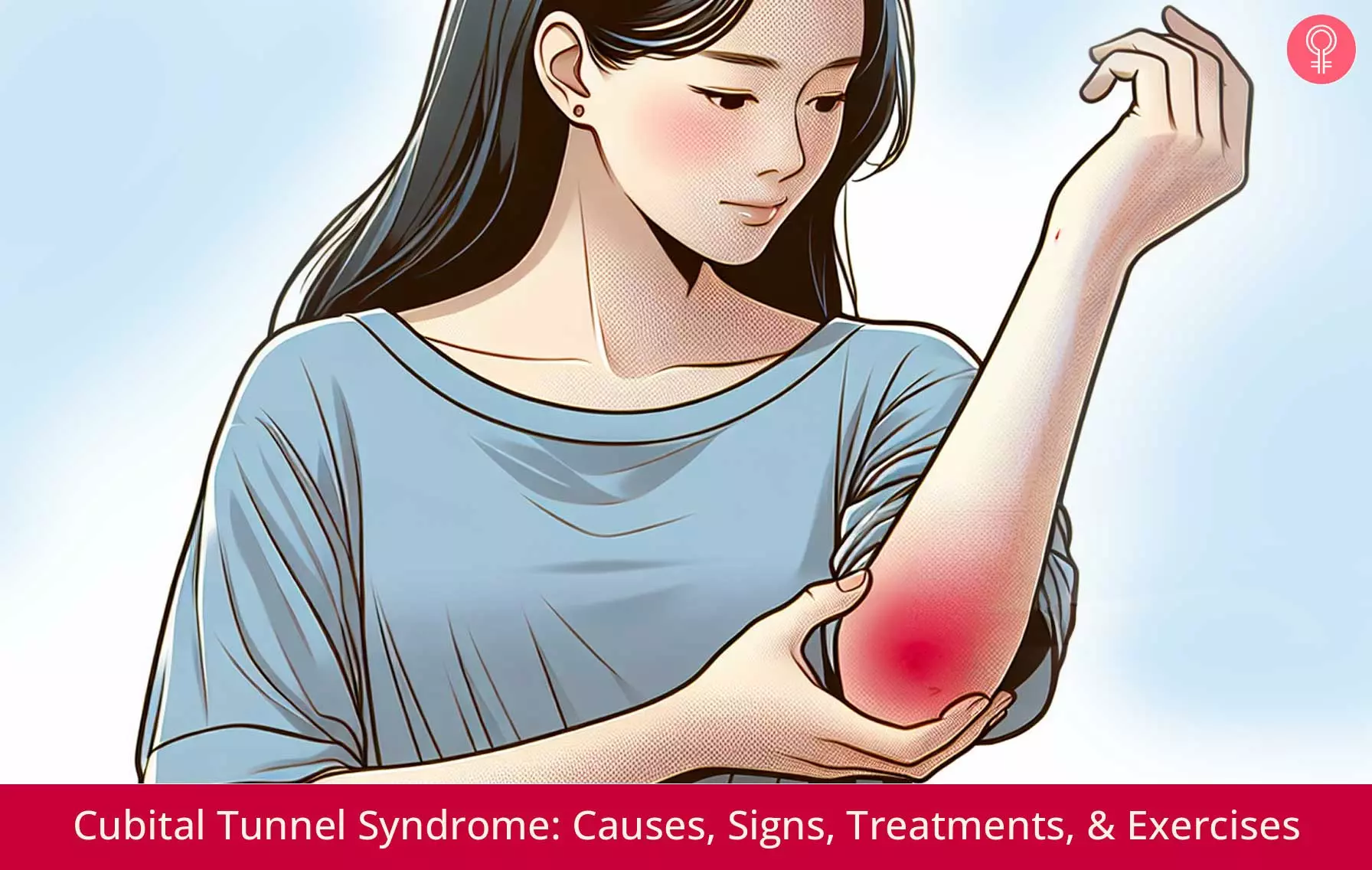What Is Cubital Tunnel Syndrome?
Cubital tunnel syndrome is a medical condition that can cause numbness or tingling in the ring and small fingers, pain in your forearm, or even weakness in the hand. It is also referred to as ulnar neuropathy. This condition is a result of pressure on or stretching of the ulnar nerve (also referred to as the funny bone nerve). The ulnar nerve is located in a groove called the cubital tunnel that runs along the inner side of the elbow. Matt Layher, a blogger, recounts his experience with cubital tunnel syndrome in his blog post. He shares, “I was also dealing with cubital tunnel syndrome in my left elbow. Essentially, the nerve that provides feeling to my left ring and pinky fingers was being compressed, causing a cold, dull feeling in these fingers (i).” He further states, “I’ve been dealing with RSI and cubital tunnel syndrome in some form or another for roughly 4.5 years now, and I’m only 26 years old. My journey is far from over.”
What Causes Cubital Tunnel Syndrome?
Factors that could be triggering cubital tunnel syndrome (ulnar nerve entrapment at the elbow) include:
Pressure on the ulnar nerve from leaning the arm on a hand rest or other similar events Leaving your elbow bent for a long duration Stretching of the ulnar nerve due to a bent elbow Repeated snapping of the ulnar nerve while moving the elbow
Individuals affected by cubital tunnel syndrome may experience the following signs and symptoms.
Signs And Symptoms
Weakness in the hand Weakness or soreness in the forearm Numbness (loss of sensation), tingling in fingers, pain, or ‘pins and needles’ sensation in the little and pinky fingers
All these symptoms usually occur when the elbow has been kept bent for a long time. It is highly recommended that you avail treatment for cubital tunnel syndrome at the earliest before its symptoms turn severe and give rise to complications. Note: Radial nerve compression differs from cubital tunnel syndrome in that it may cause numbness in the back of the hand and thumb.
How Is Cubital Tunnel Syndrome Diagnosed?
The doctor will ask you about the symptoms you have been experiencing. The main diagnosis is usually made right after the signs are noted and a physical examination is carried out. Radiography and electromyographyi A diagnostic procedure for assessing the health of muscles by evaluating the electrical activity produced by skeletal muscles. can help in diagnosing cubital tunnel syndrome (1). In some cases, you may also be tested for other medical conditions like diabetes or thyroid disease. Nerve testing may also be carried out to find out how much the nerves and muscles have been affected due to the syndrome. This testing can also help identify a pinched nerve in the neck, which causes similar symptoms. If you have been diagnosed with cubital tunnel syndrome, one of the first steps you must take is to avoid any action that can aggravate your symptoms. The common medical treatments that can be availed for treating this condition are discussed below.
Medical Treatments
Your doctor may ask you to wear a brace or splint to prevent the elbow from bending any further. You may also be asked to visit a hand therapist to find ways that can help you avoid exerting pressure on the ulnar nerve. If the affected person exhibits severe symptoms, surgery may be suggested to relieve any pressure on the nerve. The surgery is intended to release the nerve, move the nerve to the front of your elbow, or even remove a part of the bone (2). Non-steroidal anti-inflammatories (NSAIDsi A class of drugs that work like steroids, without the side effects and help relieve pain and inflammation. ), elbow pads, physical therapy, pulsed signal therapy, and corticosteroid injections are commonly used to treat cubital tunnel syndrome (1). You can also give the natural remedies listed below a shot to manage the symptoms of cubital tunnel syndrome.
How To Treat Cubital Tunnel Syndrome Naturally
1. Massage Therapy
Massage therapy can be great for those affected by cubital tunnel syndrome. Muscle hypertonicityi A condition caused by abnormal increase in muscle tone or tightness, causing stiffness and restricted movement. is one of the causes of this condition, and thus, a self or professional massage of the inner triceps may help manage the symptoms of the syndrome, such as elbow pain.
2. Hot Or Cold Compress
A cold or hot compress You can do this multiple times daily. Cold packs can help numb the pain in the affected area and also facilitate healing. Similarly, hot compresses can improve blood flow in the affected area, thereby alleviating pain and speeding up recovery (3), (4).
3. Essential Oils
a. Peppermint Oil
2-3 drops of peppermint oil 2 teaspoons of coconut oil
You can do this 2-3 times daily until you notice an improvement in your condition. Menthol, the active component of peppermint oil, has analgesici An agent that may temporarily relieve the sensation of pain and inflammation caused by headaches and injuries. and anti-inflammatory properties. Hence, the topical application of peppermint oil can alleviate the frequency as well as the degree of pain in the affected muscles (5).
b. Lavender Oil
2-3 drops of lavender oil 2 teaspoons of coconut oil
You can do this multiple times daily. Lavender oil possesses analgesic and anti-inflammatory properties that help reduce the pain and soreness associated with cubital tunnel syndrome (6).
4. Vitamins
Vitamins B6 and C may help in alleviating the symptoms of cubital tunnel syndrome. Supplementation with these vitamins exhibited a positive impact on those suffering from carpal tunnel syndrome, which is similar to cubital tunnel syndrome but affects the median nerve in the wrist (7). Hence, these vitamins could also work similarly for the latter condition. However, it is recommended that you consult a doctor before taking any additional supplements.
5. Acupuncture
Acupuncture is a type of alternative medicine that can help in the treatment of various medical issues. It involves inserting very thin needles at specific points through the skin. It can also help improve the symptoms of cubital tunnel syndrome as well as electrophysiological functionsi They involve the electrical activity of the cells, which is critical for proper organ and neuron functions. (8). In addition to these remedies, some exercises may also help in the treatment of cubital tunnel syndrome.
Exercises For Cubital Tunnel Syndrome
Certain nerve gliding exercises for the arm and hand may benefit those affected by cubital tunnel syndrome. They include: These cubital tunnel syndrome exercises can help alleviate associated symptoms and improve flexibility in the affected area. Cubital tunnel syndrome is often confused with carpal tunnel syndrome. However, there are major differences between the two. Find out in the next section.
Cubital Tunnel Syndrome Vs. Carpal Tunnel Syndrome
Both cubital tunnel syndrome and carpal tunnel syndrome impact your hands and wrist but affect different nerves. The former impacts the ulnar nerve, which runs along the inner side of the elbow. It can cause pain, tingling, and weakness in the forearm and hand (1), (2). Carpal tunnel syndrome, on the other hand, affects the median nerve that runs from the forearm to the wrist. It also results in pain, tingling, and weakness in the thumb, index finger, middle finger, and half of the ring finger (9). Both conditions can be caused by repetitive movements and can disrupt your daily activities. Hence, consult a doctor for proper diagnosis and treatment. Can the cubital tunnel go away on its own? Yes, cubital tunnel syndrome may go away on its own if you stop the activities that are causing it. However, it is best to consult a doctor instead of waiting for it to go away. What kind of doctor should I see for cubital tunnel syndrome? You can consult an orthopedist to get treatment for cubital tunnel syndrome. It will be better if you see someone who specializes in elbows and wrists. Does a neurologist treat cubital tunnel syndrome? Yes, a neurologist can also treat cubital tunnel syndrome. Do compression sleeves help cubital tunnel? Yes, compression sleeves can help cubital tunnel syndrome by providing external support and aiding circulation in the area.
Illustration: Cubital Tunnel Syndrome: Causes Signs Treatments & Exercises
Learn all about cubital tunnel syndrome- its causes, symptoms, and treatments. Click on the video given below to get the facts and understand how to manage this health condition.













